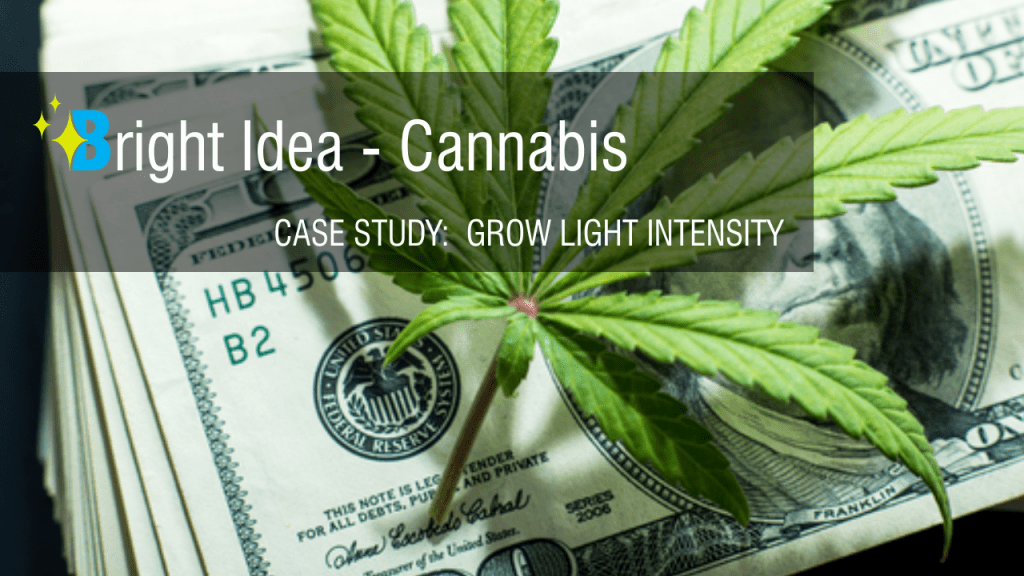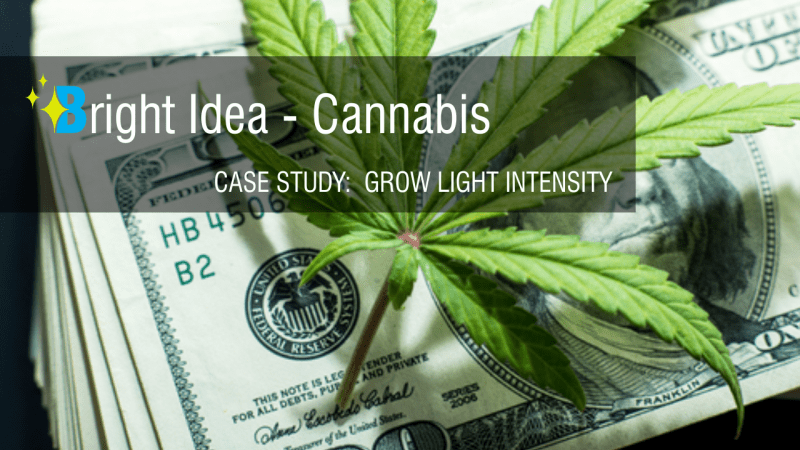
Because cannabis only recently became legal in a few regions of the world, it is common to see cannabis growers, even large commercial growers, embracing production strategies that have not been validated through rigorous scientific experiments. Rather, many conventions have been transmitted across the industry by means like word-of-mouth and internet forums.
Lighting is an important example. Most cannabis growers believe that the double-ended, high pressure sodium (HPS) light is the optimal lighting for growing cannabis during the plant’s flowering phase. A Canada regional sales manager for one of the world’s largest sellers of both HPS and LED horticulture lights estimates that 90% of Canadian cannabis growers use HPS lights. A survey published in a leading cannabis trade journal reports that 62% of North American growers use HPS while 85% use lights that provide around the same or less light intensity as an HPS (CBT Staff, 2016).
Most of the LED alternatives to HPS lights are marketed as “HPS replacements.” Specifically, they are designed to provide the same light intensity as an HPS light while consuming less electricity.1 This suggests that the market has determined that HPS lights provide an intensity and spectrum that maximizes the profitability of cannabis production, though this hypothesis has never actually been tested in a peer-reviewed study. This is not surprising since prohibition, which has only recently started to end, prevented the vast majority of researchers from considering such topics. Nonetheless, one result from the scant research that does exists suggests that cannabis growers may be under powering their plants, and thus reducing profitability. In particular, Chandra et al. (2008) analyze the
photosynthetic response of 20 cannabis plants and find that for some varieties, under certain conditions, net photosynthesis increases at light intensities up to 2000 μmol/m2· s.
Although no survey data exists on the topic, any industry insider would agree that the most common lighting strategy for cannabis is placing a 1060W double ended high pressure sodium bulb (HPS) at least 76 cm above 1.48 m2 of plants. At one meter from the canopy height, this strategy typically delivers around 400 μmol/m2· s of light to the canopy (CREE, 2016). Our own field measurements show that that level can be significantly higher (up to 700 μmol/m2· s) at certain locations in a grow room that receive substantial spill-over light from neighboring tables. Even so, the results of Chandra et al. (2008) imply cannabis growers could potentially significantly increase yields by increasing light intensity. Nonetheless, measurements of leaf photosynthetic rates alone are a poor predictor of final yields (Evans, 1997). Instead, the economic implications of lighting choices must consider the actual weight of the plant’s dried flower, harvested at peak ripeness.
For this study, we grew hundreds of cannabis plants under several different LED and HPS lights, all with different spectrums and light intensities, and compared final yields. We also use the analysis to look for evidence that horticulture LEDs, with proprietary spectrum designs, impact the relationship between light intensity and yields compared to general purpose, broad spectrum LEDs. More specifically, cannabis growers have two choices when it comes to lighting: They can buy a general-purpose, broad-spectrum LED (e.g., a flood light used for lighting streets or warehouses) or they can buy an LED light with a spectrum that has been “tuned” specifically for horticulture applications. For growers that use LEDs, it is much more common for them to use a horticulture LED since there is a belief that the tuned spectrum adds value either through increased yields or an improved chemical profile.
Nonetheless, these lights are often more than three-times as expensive per μmol of light compared to a general purpose, broad-spectrum LED. Research on other plants does show that spectrum differences across tuned-spectrum lights impacts yields. For instance, Kim et al. (2008) found that adding green light to an LED that otherwise only emits red and blue increased lettuce growth and biomass. But the question we are asking here is if the tuned spectrums of specialty horticulture lights increase yields compared to broad-spectrum, general purpose lights that, in essence, allow the plant to “choose” the wavelengths it wants.
Read the full study here: https://papers.ssrn.com/sol3/Delivery.cfm/SSRN_ID3340680_code891250.pdf?abstractid=3310456&mirid=1

I think the spectrum emmited from led will have certain health benefits for the plant, however these wavelengths only really seem to have photomorphogenic responses on the plant and its intensities(ppfd) that seems to increase yields. The efficiency is important for a wattage consumption to a usable par but would having a wider spectrum make a lamp more efficient from a plants point if view or would intensity be key?
Challis,
The comments we’ve gotten from growers is that LED provides a couple of significant benefits that increase yield. One, they run much cooler than HID lights and therefore can be suspended much closer to the canopy, showering the plants with more PPFD. Second, full spectrum LED lights include the infrared and UV wavelengths which improves growth and bloom.
The other major benefit of course is efficiency. A 660W LED replaces a 1000W HID and decreases energy use both to power the lights and via HVAC costs. As competition within the cannabis space increases, efficiency will become more and more important to maintaining profitability.
Challis,
Check out our new Full Spectrum / UV & IR lights. Hopefully these are what you’re looking for: https://www.brightwayledlighting.com/product-category/led-grow-lights/full-spectrum-uv-ir-grow-lights